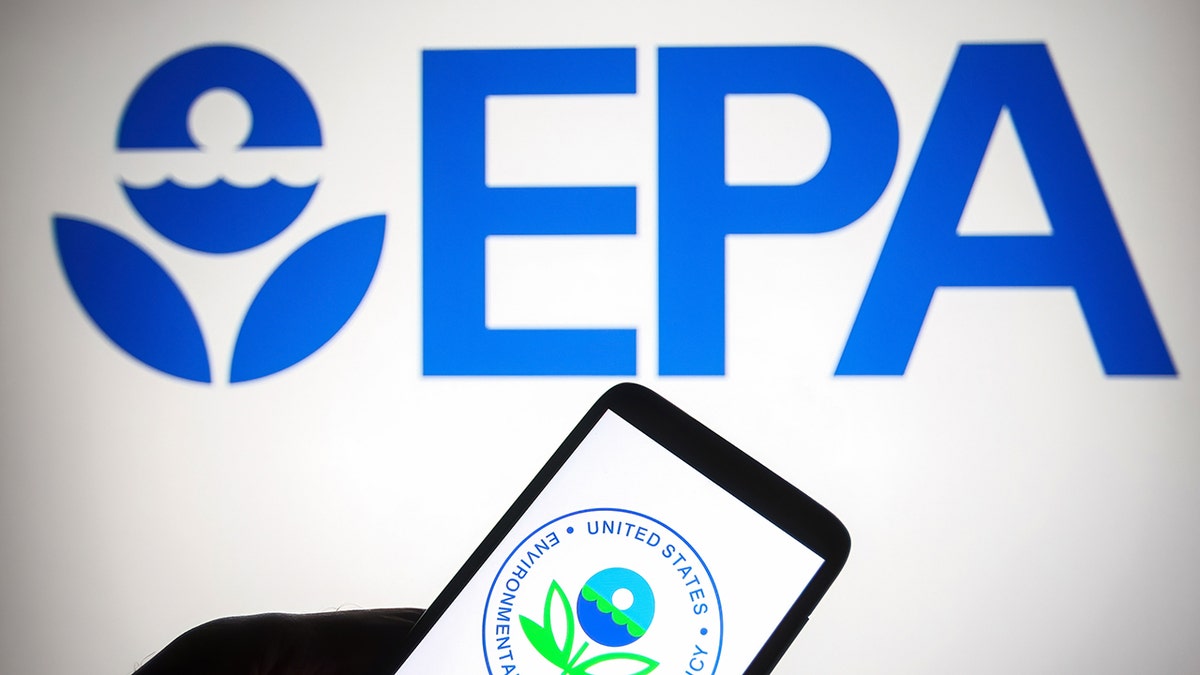The risk of having potentially harmful chemicals in your drinking water may depend on your zip code.
A study published in the journal Nature Geoscience on April 8 found that higher amounts of PFAS (perfluoroalkyl substances) were found in drinking water in certain parts of the U.S.
PFAS — also known as “forever chemicals” due to how slowly they break down — are a group of chemicals used during industrial processes and the manufacturing of consumer products.
SCIENTISTS REVEAL SIMPLE NEW PROCESS THAT MAY HELP ELIMINATE TOXIC CHEMICALS FROM EVERYDAY ITEMS
Two of the main chemicals are perfluorooctanoic acid (PFOA) and perfluorooctane sulfonate (PFOS).
There are many ways people can be exposed to these chemicals — including in drinking water.
A study published in the journal Nature Geoscience on April 8 found that higher amounts of PFAS (perfluoroalkyl substances) were found in drinking water in certain parts of the United States. (Nature Geoscience)
To determine the prevalence of PFAS in the environment, researchers from the University of New South Wales (UNSW) in Sydney, Australia, analyzed a global dataset of 273 studies dating back to 2004.
The studies included data for over 12,000 samples of surface water (water that collects on the ground) and more than 33,900 samples of groundwater (water found underground, below the surface).
CHEMICALS IN WATER AND HOUSEHOLD OBJECTS COULD REDUCE CHANCES OF PREGNANCY, LIVE BIRTHS: NEW STUDY
“We looked everywhere for PFAS concentrations in water data, including scientific journals and governmental reports and websites,” senior author of the study Denis O’Carroll, a UNSW engineering professor, told Fox News Digital.
“We compared PFAS concentrations in these water samples to international regulations. We also compared the types of PFAS analyzed to what we found in consumer products.”

The studies included data for over 12,000 samples of surface water (water that collects on the ground) and more than 33,900 samples of groundwater (water found underground, below the surface). (iStock)
Nearly 70% of the samples had levels of PFAS that exceeded Canada’s minimum safety standards (30 nanograms per liter), while 6% had more chemicals than the European Union’s standard (100 ng per liter), according to the study findings.
In the U.S., PFAS “hot spots” were concentrated in the Midwest, New England and the West Coast, according to a map illustrating the findings — although the chemicals were also detected in other areas across the country.
Globally, Australia, Europe and China showed high levels.
NON-TOXIC CLEANING PRODUCTS TO USE WHILE SPRING CLEANING
“To date, nobody has looked at the global extent of PFAS in our waters and compared it to international drinking water standards,” noted O’Carroll.
“Our study found that a substantial fraction of sampled waters exceeded PFAS drinking water guidance values, with the extent of exceedance depending on the jurisdiction and PFAS source.”
Health risks of PFAS
Dr. Mark Fischer, regional medical director of International SOS, a health and security risk mitigation company headquartered in London, pointed out that most Americans also have these chemicals in their blood.
“Although the use of these chemicals has declined in recent years, they are difficult to break down, so they are still found in some food, water and consumer products, as well as within the soil and the environment,” Fischer, who was not involved in the UNSW study, told Fox News Digital.

Health risks associated with PFAS include cancers, elevated liver enzymes, lower birth weight, heart issues, and higher cholesterol. (iStock)
Most people in the U.S. have been exposed to these chemicals, most likely through contaminated food or their drinking water, according to the CDC.
Health risks associated with PFAS include cancers, elevated liver enzymes, lower birth weight and higher cholesterol, Fischer said.
“PFAS contamination has been identified in drinking water in all 50 states.”
Other potential dangers include heart issues, plus immune and developmental damage, according to the Environmental Protection Agency (EPA).
“PFAS contamination has been identified in drinking water in all 50 states, according to the Environmental Working Group,” Fischer said.
“That said, the levels of these chemicals vary throughout states and cities.”
Study limitations
The study did have some limitations, the researchers acknowledged.
“We have measured a much wider range of PFAS in consumer products than in our waters,” said O’Carroll.
HATE WATER? HERE ARE 5 HEALTHY ALTERNATIVES, ACCORDING TO AN NFL SPORTS DIETITIAN
“As such, we don’t really have a great idea of the range of PFAS in our waters.”
The data was also limited to what the researchers could find, he noted.
“Just because we can cheaply use a chemical doesn’t mean we should.”
“While we had data for over 45,000 water samples, even more data would be useful, especially for parts of the world where we had limited data.”
The actual amount of PFAS in water could be higher than what the study results imply, O’Carroll added.

Most people in the U.S. have been exposed to PFAS chemicals, most likely through contaminated food or their drinking water, according to the CDC. (iStock)
“Current monitoring practices probably underestimate PFAS in the environment, given the limited suite of PFAS that are typically quantified but deemed of regulatory concern,” he said.
These are just one of the many types of chemicals that are used in daily life, O’Carroll noted.
CLICK HERE TO GET THE FOX NEWS APP
“As a society, we need to consider the chemicals we use and reduce our use of some,” he advised.
“Just because we can cheaply use a chemical doesn’t mean we should.”
Latest PFAS regulations
On April 10, the EPA finalized new limits on the amount of PFAS chemicals permitted in drinking water.
The new standards could reduce exposure for 100 million people, potentially preventing thousands of deaths and tens of thousands of serious illnesses, the agency said in a news release.

On April 10, the EPA finalized new limits on the amount of PFAS chemicals permitted in drinking water. (Pavlo Gonchar/SOPA Images/LightRocket via Getty Images)
This is the “first-ever national, legally enforceable drinking water standard” to protect people from the health risks of PFAS, the agency stated.
The 66,000 public drinking water systems in the U.S. will have three years to reduce PFAS levels to meet the new standards, according to the release.
CLICK HERE TO SIGN UP FOR OUR HEALTH NEWSLETTER
The EPA also announced $1 billion in new funding, provided through the Bipartisan Infrastructure Law, to enable PFAS testing and treatment of public water systems and private wells.
Fox News Digital reached out to the EPA and the American Water Works Association for comment.
For more Health articles, visit www.foxnews.com/health.





